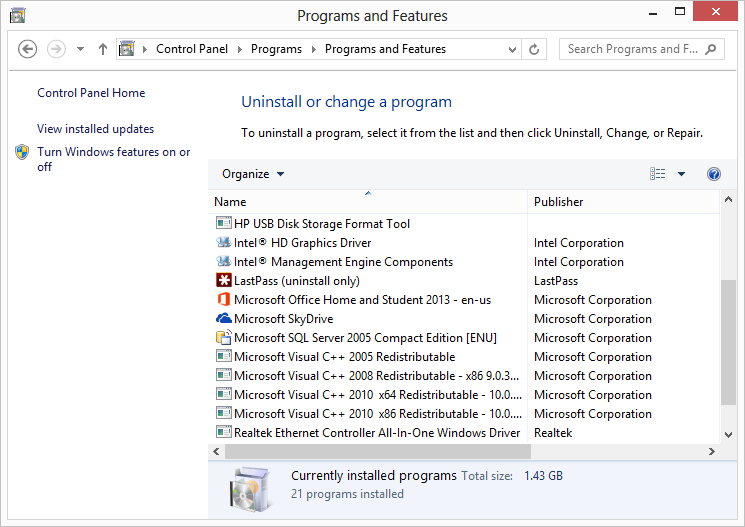Over the course of time, you will undoubtedly install numerous programs on your Windows system. These programs may be shrink-wrapped applications or ones that you download from the Web. At some point, however, you may realize that you don't want a certain program to remain on your system and so would like to free up the resources it consumes. This is when you use the Control Panel to remove such programs.
The Control Panel is the starting point for a wide variety of functions, such as backing up your computer, modifying network parameters, changing the desktop background, etc. It's also where you go when you want to remove, or uninstall, programs.
To uninstall a program, follow these steps:

Figure 1. The Control Panel's Uninstall a Program screen.
![]()
![]()
![]() This tip (12024) applies to Windows 7, 8, and 10.
This tip (12024) applies to Windows 7, 8, and 10.
The Control Panel is (or has been) the heart and soul of controlling Windows. How you display the control panel, however, ...
Discover MoreThe Control Panel is an important "dashboard" that leads you to various system-related applications. There are a few ways ...
Discover MoreNeed all your Control Panel shortcuts in a simple place? Use this tip to create a special folder that contains all the ...
Discover More2017-11-20 10:35:56
Henry Noble
Many programs do not do a good job of uninstalling themselves.
For more thorough removal, take a look at Revo Uninstaller from the VS Revo Group. There are free and paid versions.
https://www.revouninstaller.com/revo_uninstaller_free_download_compare.html
Revo begins by using the uninstall feature described in this Tip, then takes removal to the next level by searching for files, directories, and registry entries left behind by the program's uninstaller. Users have complete control of what is removed in this second phase.
Copyright © 2025 Sharon Parq Associates, Inc.
Comments